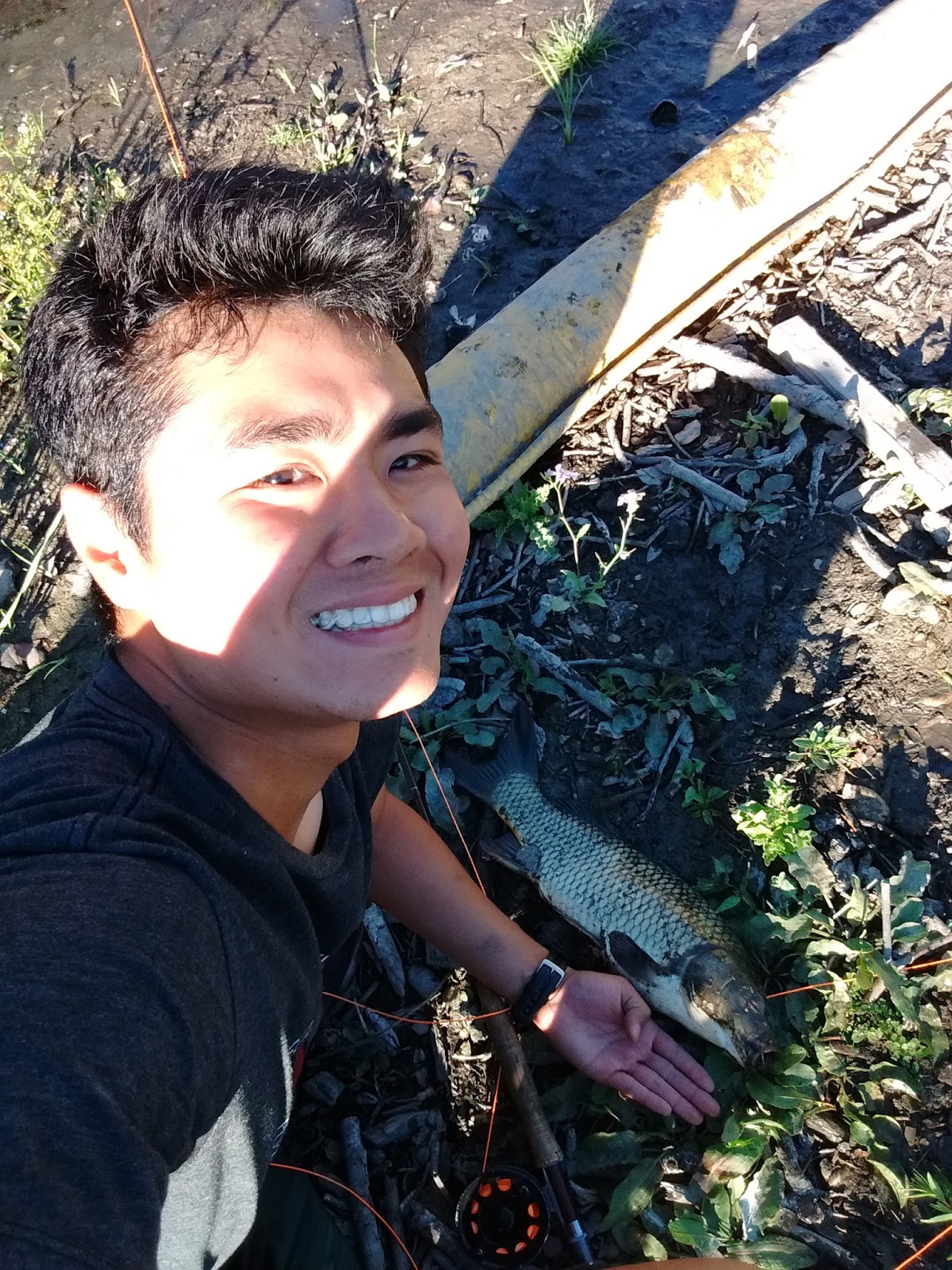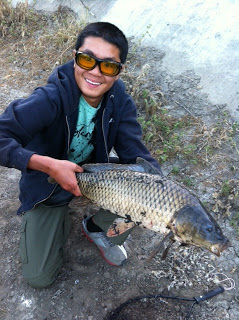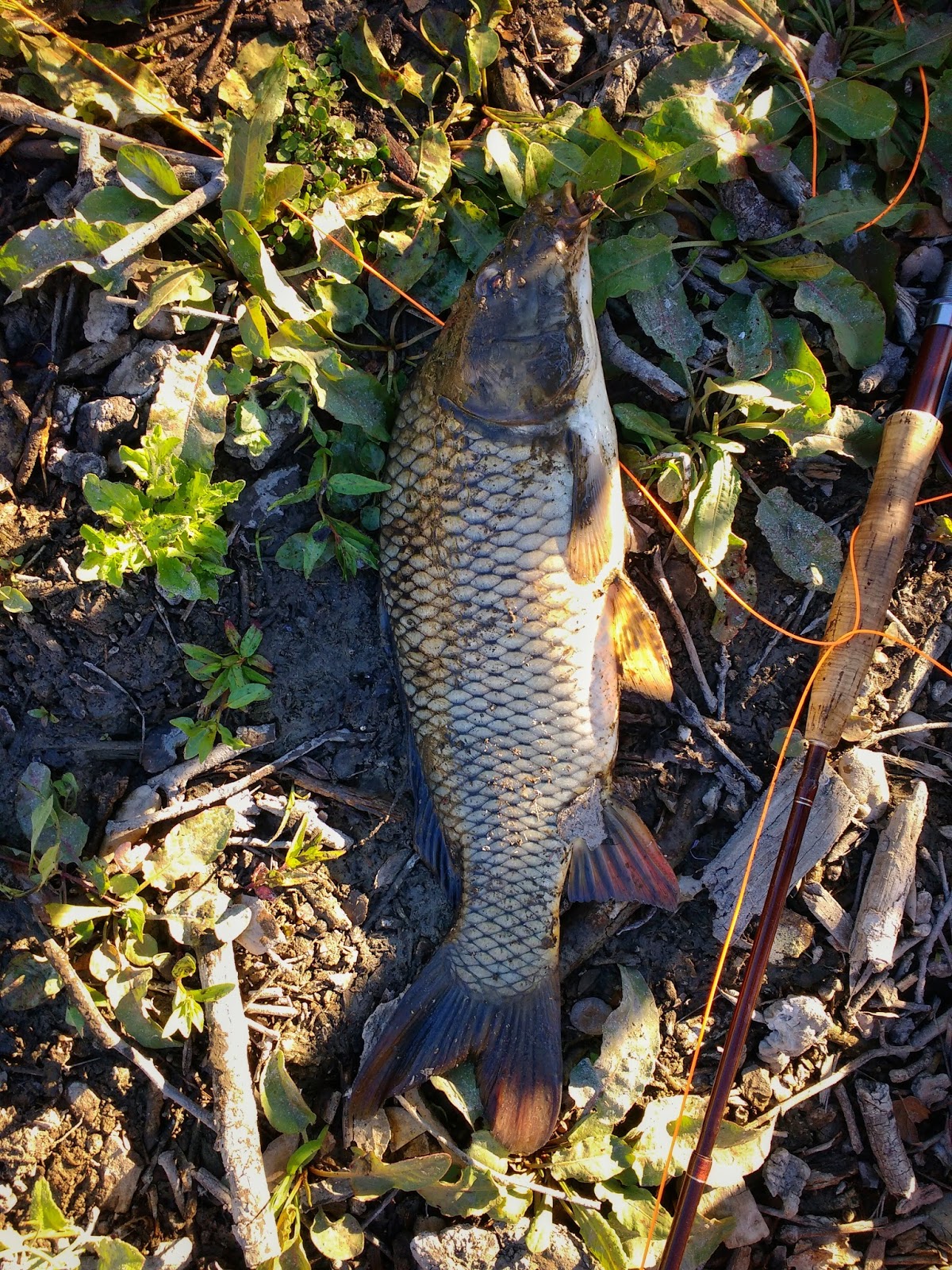I have long lamented the lack of quality fishing close to my house, but in the past few weeks I have come to realize a plethora of large carp that reside in a drainage canal behind my house.
The canal is named Matadero "Creek", and is essentially an avenue for excess storm water in Palo Alto. Because the the creek feeds into San Francisco Bay, it is subject to the ebb and flow of the ocean tides.
The banks of the canal are steep, and made out of pavement — limiting access and making it difficult to cast. Additionally the carp are only present during certain tides, when water levels allow the carp to move into the upper reaches of the stream to feed.
I have found sporadic success with a six-weight fly rod, 6-pound test and a #4 crayfish fly. The fly is a very dark red, and composed more of plastic than of feathers. If I ever find where I bought it from I'll post a link.

The fishing is often muddy, but rewarding
The trick is to visit the creek often and scan for fish. If fish are present a well-placed fly will almost certainly result in a hit. If the fish don't hit within the first 10 minutes, the chance of getting a carp to hit are greatly diminished.
Landing the carp is extremely difficult, since the steep concrete banks coupled with the size of these fish make it near impossible to land the fish without a net. The logical solution? Bring a net with a long handle.
Finally, if you ever land these mighty fish I would advise catch and release. From an ethical standpoint it is always better to release fish so that others have an opportunity to share in the excitement. From a health-oriented perspective it is probably unsafe to eat the carp. They feed off the sediment at the bottom of the creek, accumulating parasites and toxins over their long lifespans.
So locate the nearest drainage canal and start fishing!

My biggest carp from the stream

Leave a reply